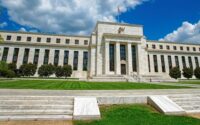Colombia’s peso pushes past $4,600 to USD and rising

The Colombian peso was hammered during the early hours of trading on Monday, breaking a new record to one U.S dollar of COP$4,500 pesos.
The steady devaluation of the peso since the election victory of leftist Gustavo Petro on June 19, has been compounded by fears of an impending US recession, rising inflation, energy and food disruptions caused by the Russia-Ukraine war, and host of other domestic and global economic woes.
Having already lost more than 10% of its value this year, and almost 20% since the first post-election trading day, President-elect Gustavo Petro – currently vacationing in Florence, Italy – issued a brief statement on Twitter urging Colombians not to buy dollars as they will be “worth less later.” This ambiguous social media comment will hardly stymie the slide of the peso against the greenback, and despite having appointed economist José Antonio Ocampo as his Minister of Finance more than two weeks ago, investors are worried that Colombians have started “cashing out.”
As US financial safe havens attract the peso, Colombians are also rushing to renew passports and travel visas issued by foreign governments. “It always begins with the money, before people begin thinking of migrating overseas,” believes financial consultant Peter Billings.
An article published by Gideon Long in the Financial Times (July 9) and titled “Colombians look to Miami as Gustavo Petro’s election sparks capital flight fears,” highlights that realtors are seeing an uptick in business from countries across South America – including Colombia – that have elected left-wing governments over the last year. “After Petro was announced as the winner we immediately started getting calls,” said Daiana Quiceno, vice-president of sales at PMG Residential in Miami, to the Financial Times. “My phone was bombarded.”
“We witnessed a similar situation in the recession of the late 1990s, and downturn in confidence in the country. The security situation with mass kidnappings by FARC resulted in a flight of capital from Colombia,” states Billings. “The election of Álvaro Uribe turned the tide on decades of negativity,” he said. “Now, two decades later, we are seeing the reverse side of the equation: declining confidence in a new government that could shift from moderate left to hard left within a year.”
With emerging markets taking a direct hit with a strong US dollar, the Euro – hardly an emerging currency – has nearly touched parity with the dollar, pushed lower by fears of an energy crisis with the planned shutdown of the Nord Stream 1 pipeline that supplies most of the natural gas to Europe from Russia. The Sterling has also weakened against the dollar to trade at $1,185 and lowest exchange rate in two years. The pound’s weakening comes with political uncertainty after the resignation of PM Boris Johnson and post-Brexit economic gloom.
As the Colombian currency loses a per-day average of COP$70 pesos to the dollar. On Tuesday, one of Latin America’s most solid and dependable currencies pushed past COP$4,600 to the USD, with the upward trend most likely continue until Gustavo Petro is sworn in as the country’s first leftist President on August 7, and the Finance Ministry, begins to reign-in the peso against adverse global forces and more interest-rate hikes by the Central Bank.
[ad_2]
Source link

